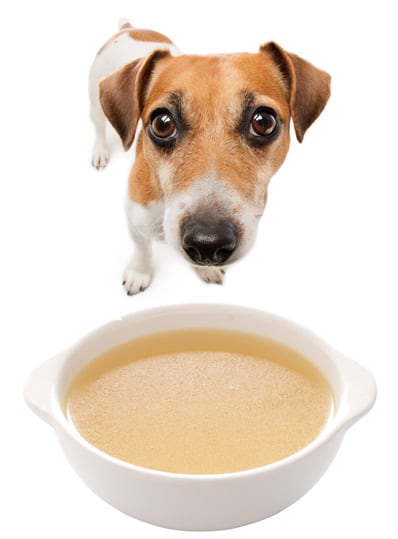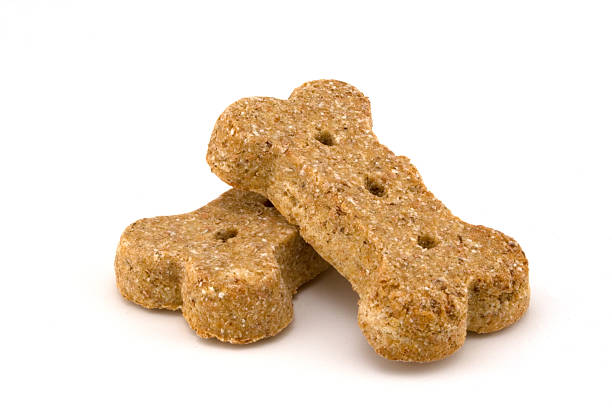The trend of grain-free diets for dogs is increasing, causing many dog owners to wonder if it is the best option for their furry friends. The appeal of this diet largely stems from two main reasons. First, dog food based on grains is the norm in pet food, causing people to suggest that a diet devoid of grains might help to lessen possible allergic reactions in dogs.
The second reason is that it tends to be lower in fat, and some pet parents believe this may help their pets lose weight. However, grain-free diets are not necessarily lower in fat, and no evidence feeding a grain-free diet to your pet will lead to weight loss. It is important to consider the nutritional quality of foods when deciding on dog foods for your pet. Some dog foods may be lower in fat but provide a full and balanced diet.
It is also important to note that many of the foods marketed as grain-free are not free from grains. It is important to read the label and know what you are feeding your dog.
This article will explore the benefits of grain-free foods and tips on making the switch. The three most important factors in choosing a good quality dog food are the quality of the ingredients, allergen testing, and labelling, which can indicate if the food contains any corn, wheat, soy, or dairy. If there is an ingredient that you are unsure of, it is best to feed the food without it.
The quality of ingredients can be determined by reading the labels and looking at the ingredients in detail. The ingredients listed on the label should be in the food, not a list of ingredients that are only used as additives. Be sure to look at the ingredients and consider what other foods your dog may eat when you are out. How much of the food is protein, fat, vitamins, and minerals? If not enough of these ingredients are in the food, it could be hard to find healthy alternatives for your dog.
Allergen testing and labelling can be done through your vet or online. Some companies can test foods for you.
Check the label to see if there is a list of ingredients. Look at the ingredients and determine how much protein is included in the food and its other nutrients. If there is no list of ingredients or does not contain enough protein or other nutrients, look for a food with more of what your dog needs.


When buying treats, read the label and see if they are made with chicken, turkey, or rice. If they are, buy a different treat. These treats contain gluten and can cause your dog to have digestive problems.
Avoid cat food or rawhides when purchasing for dogs as cats make their antibodies to fight off infections and parasites. If your dog accidentally eats an infected rawhide or gets into a cat’s food, don’t try to treat the infection with anything you find in their food.
What Are the Benefits of Grain-Free Dog Foods?


There are many benefits of feeding grain-free dog foods for your pets. The number one reason to choose a dog food without grain content is better for your dog’s health. Grains can cause food allergies to your dogs and cause skin problems, digestive issues, and obesity.
Grain-free dog foods also tend to have more protein and fewer carbs than traditional dog food, which can help keep your dog healthy and trim. It’s better for your dog’s health.
- Grain-free dog foods are more nutritious.
- More protein in grain-free food contain fewer calories, and it’s easier for the dog’s digestive system.
- It may reduce the risk of food allergies
- Help maintains a healthy weight gain
- Reduce your dog’s skin problems
Grain-free foods for dogs are often more expensive than regular dog foods. But on the brights side, grain and gluten-free dog food are more beneficial to keep your dogs happy..
Related read: Best Hypoallergenic Dog Food
Grain-Free Dog Food Is Better for Your Dog’s Teeth


Many dog owners also seek the best food for their dog’s teeth. Choosing grain-free dog food is the way to go. Grain-free foods don’t have the same problems as grain-based foods regarding tartar build-up and plaque. That’s because grains are sticky and tend to get caught in your dog’s teeth, leading to bacteria growth and cavities.
Grain-Free Dog Food Is Better for Your Dog’s Heart
Dogs are believed to be carnivores, and their natural diet consists of mostly meat. Grain-free dog food is better for your dog’s heart because it contains more protein from animal sources and less starch. Grain-free food also has a lower glycemic index, which doesn’t cause as much of a spike in blood sugar levels. This is important for dogs with diabetes or other metabolic conditions.
Grain-Free Dog Food Is Better for Your Dog’s Joints
If you’re like most dog owners, you want the best for your furry friend. That’s why you may be considering switching to a grain-free diet for your pup. A grain-free diet can improve your dog’s joints, digestion, and coat. Grains are difficult for dogs to digest and can lead to inflammation in the gut and joints.
Grain-Free Dog Food for Older Dogs
The benefits of a grain-free diet for dogs are becoming more well-known. A grain-free diet can be especially beneficial for older dogs who may be having trouble digesting grains. Grain-free food is also more nutrient-rich than regular dog food and can help keep your dog healthy and active into old age.
Grain-Free Dog Food for Dogs with Allergies
If you have a dog with allergies, you may be wondering if grain-free dog food is the best option for them. Dogs with allergies can have sensitivities to various ingredients, including grains. Grain-free dog food is made without grains, making it a good option for dogs with allergies. There are many different grain-free dog food options available, so you can find one that meets your dog’s specific needs.


Grain-Free Dog Food is Better for Your Dog’s Digestive Health
Grain-free dog food is becoming increasingly popular as people become more aware of its benefits for their dogs’ health. Grain-free food is better for your dog’s digestive health because it doesn’t contain carbohydrates as grains do. Grains are difficult for dogs to digest and cause gas, bloating, and diarrhoea problems.
How to Transition your Dog to a Grain-free Diet
When transitioning your dog to a grain-free diet, you should keep a few things in mind. First, it’s important to gradually switch the dog’s food to avoid stomach upset. Start by mixing a small amount of the new food with the old, and gradually increase the proportion of grain-free until your dog is eating only the new diet.
Another thing to consider when making the switch is that not all grain-free diets are created equal. Different grain-free formulas contain different ingredients, and some of those ingredients may be harmful to your dog.
Ask your vet about their recommendations to ensure you’re giving your dog complete and balanced nutrition. Lastly, it’s important to keep your dog on a grain-free diet for at least two months after the initial switch to give his gut a chance to heal. If you have concerns about your dog’s new diet, talk with your veterinarian.


Is Grain Bad for Dogs?
Dogs are usually carnivores, and their digestive systems are not designed to digest grains. Grains can cause health problems in dogs, such as food allergies, skin problems, and obesity. Grain-free dog food is a better choice for dogs because it is more digestible and does not contain the health risks associated with grains. Grains in dog food can cause serious health problems. Grains are high in carbohydrates, which can result in obesity and diabetes.
You can try making homemade dog food: A Guide to Making Your Own Healthy Homemade Dog Food
Is Whole Wheat Bad for Dogs?
Dogs are carnivores, and their digestive system is not designed to process grains. While whole wheat may be nutritious for humans, it can harm dogs. The high levels of carbohydrates in whole wheat can cause digestive problems for dogs, leading to gas, bloating, and diarrhoea. Grain-free dog food is a better option for dogs as it is made with more protein and fewer carbohydrates.
A Word of Caution
There are many reasons people might choose to feed their dogs a grain-free diet. Some people believe that grain-free diets are healthier for dogs, while others believe that grains can cause health problems in dogs. Regardless of the reason, there are some things to keep in mind when feeding a dog a grain-free diet. Grain-free diets can be more expensive than diets with grains, and they may also be less nutritionally complete.
There is also a certain degree of controversy over grains in dog foods. Some veterinarians believe that grain-free diets should be avoided because they do not contain enough nutrients to sustain healthy dogs.
Some experts believe that using grain-free diets can help prevent some health problems in dogs. Others believe that grain-free diets can cause health problems in dogs. The bottom line is that which diet you choose will depend on the individual needs of your dog and the dietary requirements of your dog’s breed.
Conclusion
Grain-free dog food is a great option for pet owners because it is healthier for their dogs and helps prevent digestive problems. It is also a good choice for those looking for an alternative to traditional dog food products. It is a healthy and nutritious option for your pet. It can help improve their skin and coat health, digestion, and energy levels. So if you are looking for a portion of better food for your dog, consider switching to a grain-free diet.


